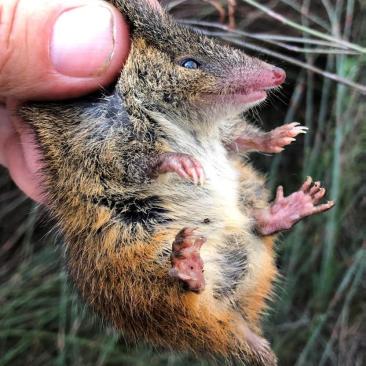Timberlands Pacific Pty Ltd (TPPL), an FSC-certified forestry organisation spanning Tasmania and the Green Triangle region of South Australia and Victoria, demonstrates its dedication to preserving these values. Through meticulous assessments, TPPL identifies and safeguards the ecological importance of its diverse forest estates, underscoring its leadership in sustainable forest management and biodiversity conservation.
The HCV approach, developed by FSC in the 1990s, serves to identify and manage critical values within production landscapes like TPPL's forests. This framework spans six categories—species diversity, landscape-level ecosystems, habitats, ecosystem services, community needs, and cultural values—adopted across forestry and other sectors. Under FSC Principle 9, all certified forestry organisations are required to maintain and/or enhance these HCVs through a precautionary approach, ensuring proactive conservation and responsible resource management practices.
Nurturing Nature's Treasure Troves
At the core of TPPL's operations lies the Penola Plantations, blending Pinus radiata plantations with natural vegetation pockets. Designated HCVs and other reserve types harbour a diverse array of flora and fauna, including rare or threatened species. TPPL's dedicated experts conduct thorough assessments to ascertain the ecological significance of these sites, highlighting their critical role in biodiversity conservation.
TPPL's approach to managing HCVs is guided by a profound respect for nature. Under the umbrella of FSC Principle 9, TPPL identifies and manages HCVs potentially impacted by their activities. This proactive stance involves setting clear management objectives, implementing stringent operational controls, and instituting robust verification and monitoring programs to ensure continual maintenance and/or improvement in conservation outcomes.
Six HCVs have been identified within the Penola Plantations estate, all falling under HCV class 3—forest areas containing rare, threatened, or endangered ecosystems. TPPL has recently undertaken enhancement efforts at the Werrikoo HCV in western Victoria, classified as 'Damp Heathland' within a 62-hectare depleted Ecological Vegetation Class. Flora assessments indicated the heath was aging and required controlled burning for regeneration.

A Triumph in Western Victoria: The Werrikoo HCV
Since 2014, monitoring efforts at Werrikoo, including hair-tubes, camera surveys, and small mammal trapping, have revealed significant wildlife presence. Notably, the nationally vulnerable Swamp Antechinus and the endangered Heath Mouse have been documented. The Swamp Antechinus thrives in long-unburnt habitats but faces threats from frequent burning. Conversely, the Heath Mouse adapts to environments shaped by regular fires, with studies showing population declines as heath habitats mature.

To balance the needs of these species, TPPL collaborated with local experts to develop a mosaic burning strategy across Werrikoo. This approach involves planned burns at different times and locations within the reserve to create diverse habitats. Targeted surveys, field assessments, and controlled burns were conducted in 2017, 2022, and most recently in autumn 2024. The Nature Glenelg Trust, partnering with TPPL, conducted preparatory trapping and surveys ahead of the 2024 autumn burn.
TPPL exemplifies the transformative impact of responsible forest management under the banner of FSC certification. Through their dedication to preserving HCVs and supporting biodiversity, TPPL not only protects Australia's native wildlife but also inspires a movement towards harmonious coexistence between humanity and the natural world. In this way, TPPL ensures that future generations inherit a planet rich in ecological wonders and sustainable resources.